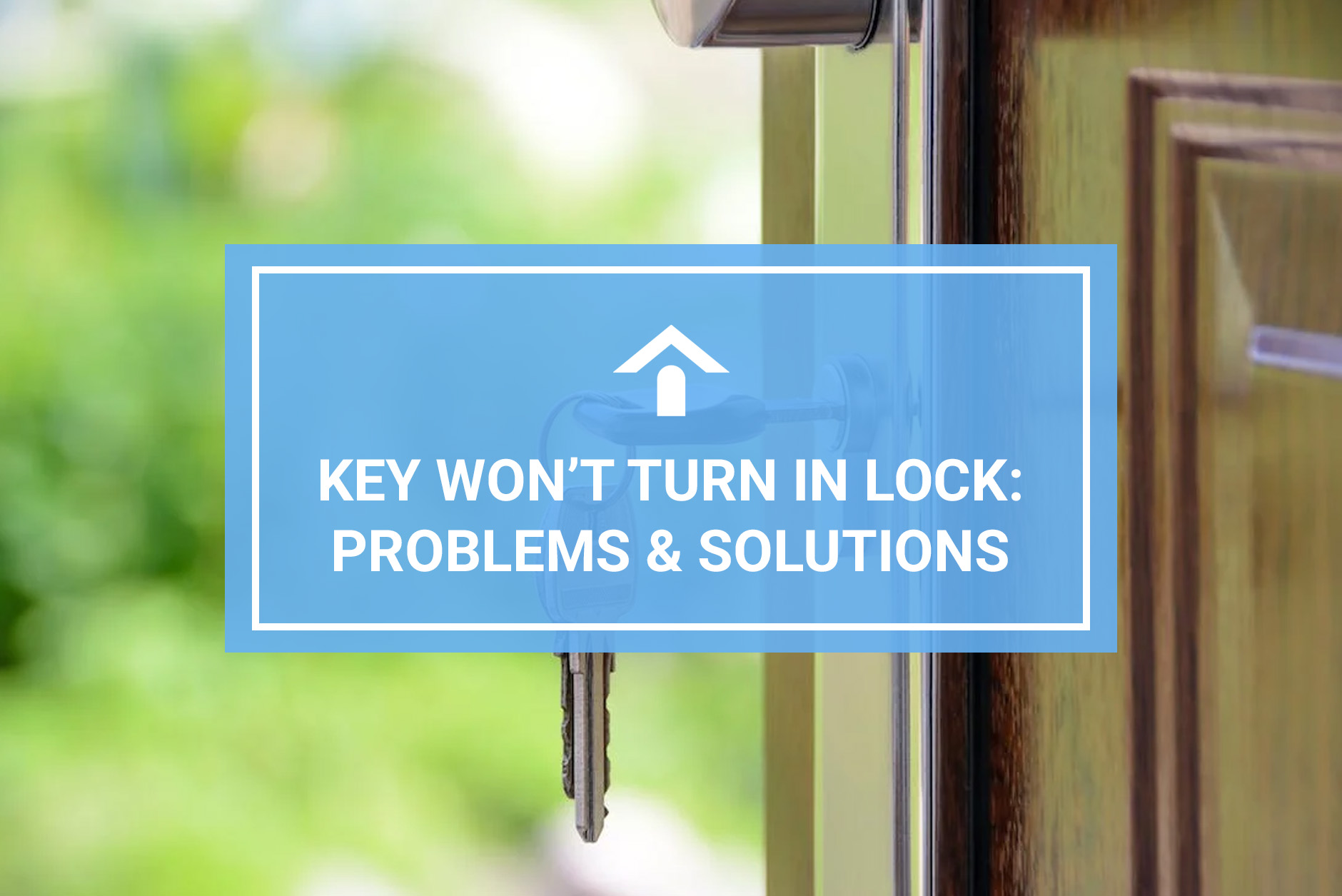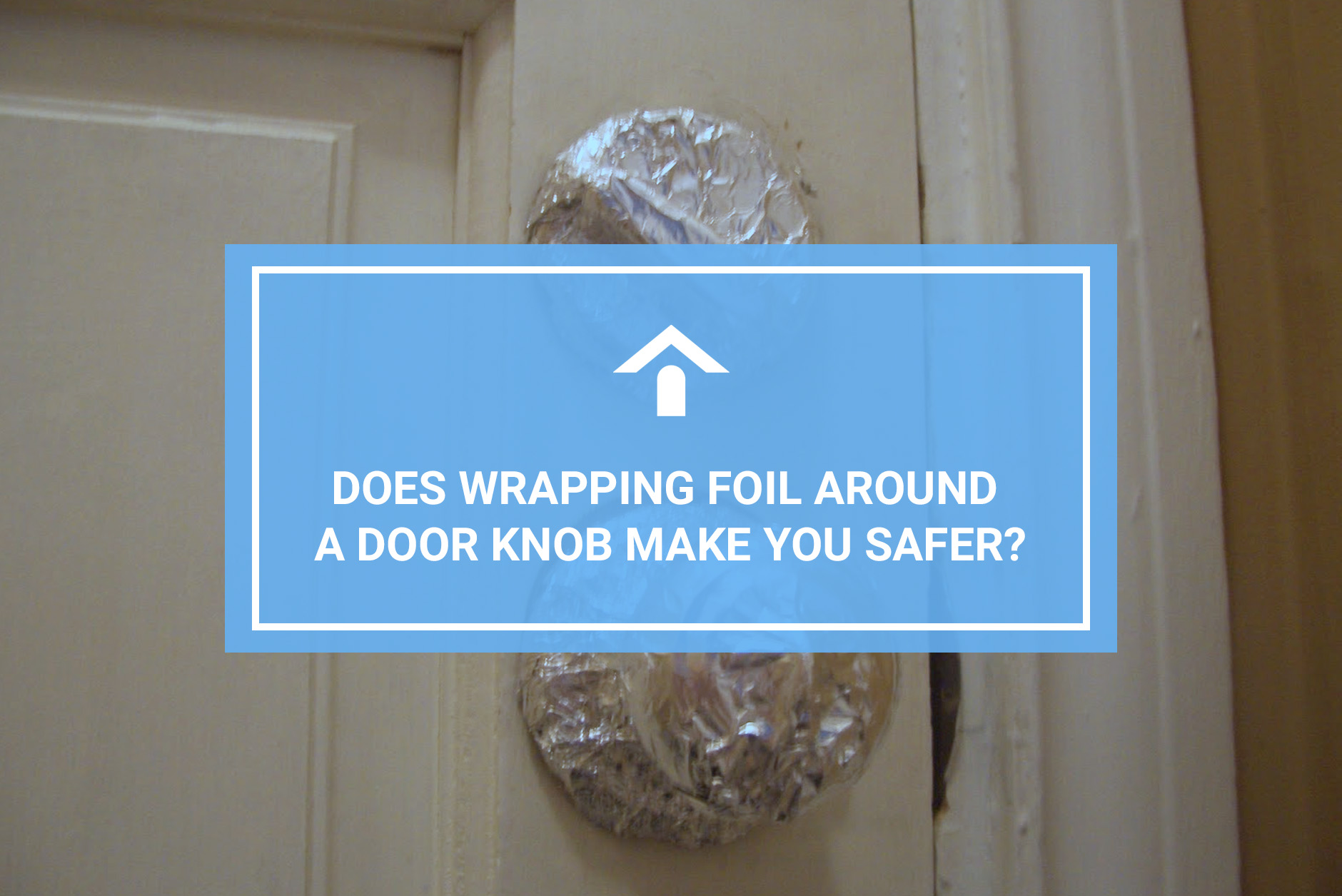You’ve inserted your key into your house door or car and it won’t turn. It’s a scenario that can leave you feeling panicked and bewildered. But fear not, you’re not alone in facing this common issue. In this blog post, we’ll explore the various reasons behind a key refusing to turn in a lock and provide you with practical solutions to help you regain access to your home, office, or car. The solutions provided are relatively simple, so you don’t have to be a handyman to perform any of the DIY fixes discussed below.
House Keys Won’t Turn In Lock
Common Causes & DIY Solutions
We’re big fans of DIY projects at Home Directory. You feel a sense of accomplishment when you solve a problem on your own and you also save money avoiding the cost of professional help. If you want to try to tackle fixing your house lock on your own, these are some common causes and potential solutions you can attempt.
Dust, Grime, or Dirt Contamination
One of the most common causes for a key not turning in a house lock is dust, dirt, or grime build-up within the lock. Dirt and dust collection within the lock cylinder can prevent the lock pins from moving, which in turn prevents the key from turning in the lock.
The good news is that the solution to this issue is a simple and cheap DIY fix. You’ll need to purchase some form of lock lubricant like WD-40, graphite spray, a silicon-based lubricant, or a dry lubricant. You’ll want to spray or apply your lubricant into the keyhole. You can then insert your key to work the lubricant into the locking mechanism. You may have to move the key back and forth several times within the lock to work the lubricant into the locking mechanism better. If dirt or grime is the issue, the key should then be able to turn in the lock once the lubricant is worked in.
Liquid lubricants like WD-40 can be very messy. We personally recommend using a dry lubricant like dry graphite powdered lubricant over a liquid lubricant to keep your hands and your key clean.
Bent Keys
It’s possible your key may not turn in the lock because it’s slightly bent and will no longer fit properly in the cylinder. Keys can be bent when they’re utilized for unintended uses like opening a can or cutting a box.
You won’t be able to straighten a key with your bare hands. You’ll need a hammer or a bench vise to get the job done. If you’re using a hammer, place the key on a smooth flat surface and hammer the portion of the key that is bent until it also lays flat against the surface. You don’t want to reduce the thickness of the key, so try to avoid over-hammering. A bench vise is much easier to use than a hammer. You can place the key within the vise and tighten the vise to straighten the key. Once the key has been straightened, it should be able to turn in the lock.
Blunt Key Tips
When a key tip has been blunted, the shape can be modified in a way that prevents the key from properly fitting in the lock cylinder. Like bent keys, blunted tips can be caused by using keys for unintended purposes.
If your tip appears to be blunted, fixing it could allow your key to once again turn in your lock. You’ll need a bastard cut file to be able to shape the key. Use the file to remove excess metal from the tip. Avoid removing too much material to the point where the shape of the key is drastically different. You just want to shave the tip to a point again.
Frozen Locks
This cause only occurs during the winter, so you can dismiss this as a potential cause in the summer months. When it’s cold enough, your locks can sometimes freeze shut.
Naturally, the way to fix a frozen lock is to provide warmth. Warm water can work to warm up your key. If you use water, make sure you dry the key before putting it in the lock (you don’t want more water to end up in the lock mechanism where it can freeze). A better alternative would be to use a hair dryer or a lighter to warm up the key and keep your key dry. Place your warm key into the lock mechanism and slowly turn it. The lock will thaw out and it should then turn once it unfreezes.
When To Contact A Locksmith
If you’ve attempted the DIY fixes above and you still can’t get your key to turn in the lock, then it may be time to contact a locksmith. On average, locksmiths typically charge anywhere from $50-75 an hour. You’ll likely want to budget anywhere between $50 and $175 for help.
How To Fix A Broken Key
Your key may snap in your attempts to fix it. Your first inclination may be to try to glue it back together. This is not a good long-term solution, because the glue could come undone while the key is in your lock and then you’ll have to fish the broken half out of the lock. Keys are produced with strong alloys and they usually only snap when the metal is worn down. Glue isn’t going to help strengthen metal that is already weakened.
The best solution to fixing a broken key is to create a new replacement key. Home improvement stores like Lowes and Home Depot offer key copy services. You can create a new replacement key in minutes.
Car Keys Won’t Turn In Lock
Common Causes & DIY Solutions
When it comes to car problems, a cheap solution is a rarity. We’ll cover the affordable DIY solutions you can try to get your key to turn in your ignition before turning to more expensive professional solutions.
Engaged Steering Lock
Steering lock mechanisms were added to cars to prevent theft. Steering locks are designed to engage when the wheel or the tires of the car are turned without the key in the ignition. When the steering lock is engaged, the key will not turn in the lock. An engaged steering lock is one of the most common reasons for a key not turning in the ignition. The easiest way to determine if the steering lock is engaged is to try to turn the steering wheel slightly. If you feel strong resistance when you try to turn the wheel, then the lock is engaged.
To disengage the steering lock, you’ll need to insert your key into the ignition while pressing your foot down on the brake pedal. Turn the key in the ignition while moving the steering wheel from side to side. As you perform this process, make sure you turn the steering wheel gently from side to side as opposed to jerking the wheel with force to avoid damaging the lock. Eventually, the lock should disengage and you’ll be able to turn the key in the lock.
Gear Lever Restrictions
Some cars are built with restrictions that prevent you from turning a key unless a car is in park or neutral. This prevents you from accidentally going forward or backward when you start your car. There are some cars that actually require the car to be in neutral instead of parked for the key to turn (though this requirement isn’t very common).
All you have to do to fix this issue is change gears to park or neutral to be able to turn your key in the ignition. If you drive a manual transmission, you may have to press down on the clutch and jiggle the lever a bit if the car ended up stuck in a different gear.
Dead Car Battery
Newer car models that still utilize keys instead of key fobs will often utilize electronic components to allow the ignition key to turn when it is safe to do so. This means that if your car battery is dead, the key won’t turn. You can use a car battery tester to determine how much juice is left in your car battery.
As a temporary solution, you could jumpstart the car to get the key to turn. You’ll eventually want to get your car battery replaced for a longer-term solution to the issue.
Dirt, Grime, Or Dust Contamination
Just like home door locks, car locks can jam with built-up dirt, grime, or dust. The solution is the same for car locks as it is for house locks. You’ll need a lubricant like WD-40, graphite spray, a silicon-based lubricant, or a dry lubricant. You can apply the lubricant to the lock and move the key back and forth inside the lock to spread the lubricant around. Eventually, the key should start to move within the lock as the dirt and grime are cleaned out.
Key Or Ignition Damage
If all of the methods above don’t work, then there could be damage to the key or the ignition. As previously mentioned for bent or blunted keys, you can fix these issues on your own. If the damage to the key is too substantial to fix or if the ignition is damaged, you’ll need to replace them. Copying a key is an easy process, but replacing an ignition will require help from a professional.
When To Contact A Locksmith Or Auto Electrician
When DIY fixes don’t work, it will be time to contact a professional locksmith or auto electrician. Repairing damaged components isn’t an easy fix and is something that’s best left to professionals. The cost for a locksmith for auto keys can vary slightly from house keys. You can actually end up paying less for auto lock problems. Expect to budget anywhere from $10 to $150 for a car key issue. Working with a professional outside of an auto dealer will save you money. Taking your car to a dealership will be the most expensive option.
Still Need Help Fixing Your Lock? Find A Professional On Home Directory
Home Directory vets and lists some of the most experienced professionals across the country. You can use the directory to find a locksmith near you. Simply search for a locksmith in your area and a list of available locksmiths will be provided.





